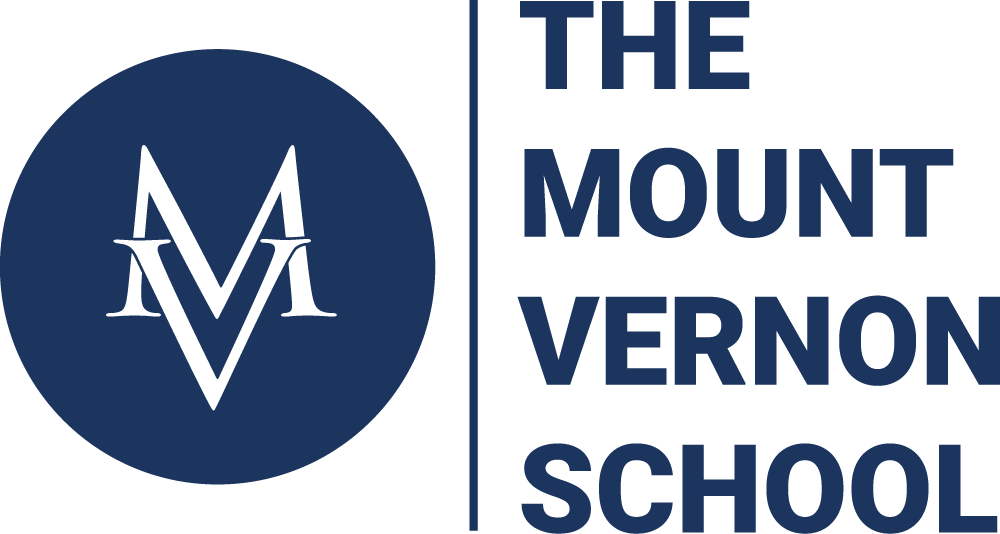Contributed by Larisa Pender-Healy
How Can We Do Better?
My intention was for students to design with empathy. I was inspired by the manner in which doctors handled the death of my sister. We can do better. Almost 12 years ago I lost my older sister, Summer, to a stroke. Doctors misdiagnosed her condition and gave her a spinal tap which rendered her immediately brain-dead. The machines were keeping her physical body alive but her soul had left us. Mom asked me, “What would you like to do?” The answer was clear.
When I reflect on this experience I can’t help but think that the medical staff could have shown more empathy for our family instead of treating us like another box to check. We can do better. This experience was the motivation for me to mentor my students to design with empathy. They may be my doctor someday. Also, I wanted them to prepare for real future challenges such as fixing failing heart sutures, building a mechanical heart valve, designing low-cost prosthetic arms, creating helmets to prevent concussions, and completely clearing plaque from an artery to help prevent a future heart attack. Personally, I would like to have a doctor who isn’t afraid to take risks and design a solution, rooted in empathy. We can do better.
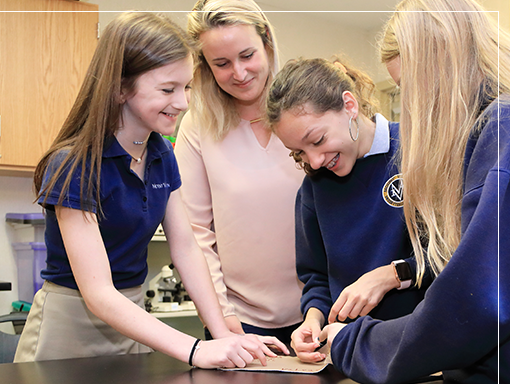
The Challenge
The first thing I needed to do was find experts to help boost my knowledge on the subject matter. While teaching a summer course at Georgia Tech I connected with a biomedical engineering postdoc student from Emory. A single conversation morphed into a beautiful collaboration with five biomedical engineering graduate students from Emory and Georgia Tech. We designed a seventh grade unit to be a hybrid between a PBL and a design thinking challenge.
How can we, as biomedical engineers, …
- redesign valve sutures to ensure the valve can stay in place for as long as needed?
- design a method for removing plaque from an artery without cutting or damaging the artery?
- design a low-cost mechanical prosthetic hand?
- design a low-cost shock absorbing helmet?
- design a new type of working mechanical heart valve
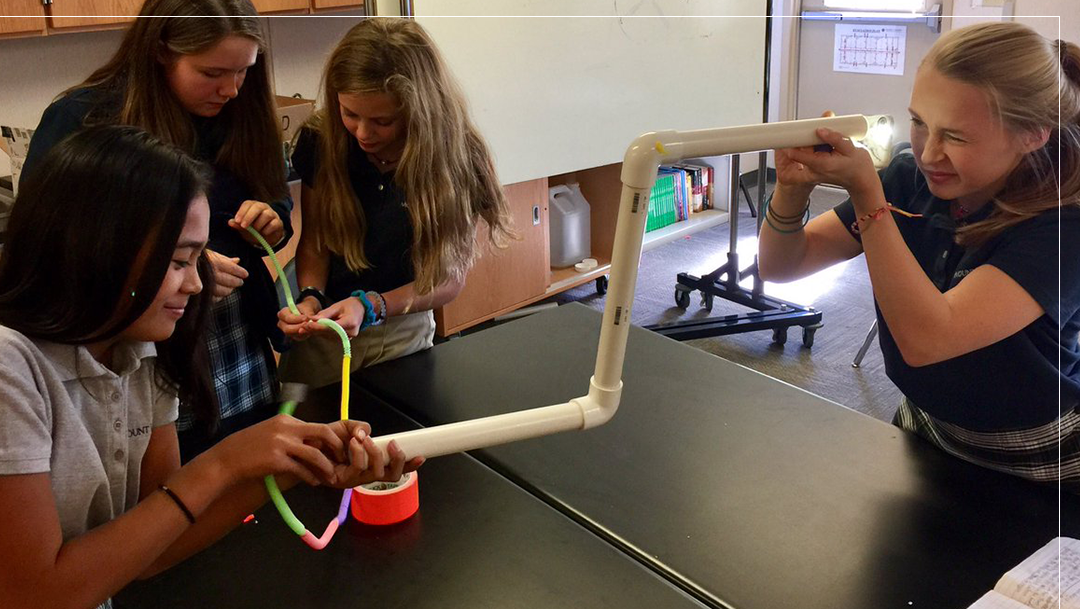
Don’t Just Build… Build For Someone
One team from each class period would go to the Buzz on Biotech showcase – the largest biomedical engineering expo in the United States for middle and high school students, held at Georgia Tech in the fall.
A powerful way for the students to connect to their project was to hear stories from real people who have experienced the specific medical challenges they were about to tackle. In just 10 days, we pulled together a lineup of guest speakers who agreed to share their experiences. I challenged my students to hear who each individual was, as a person, hopefully setting the stage for them to connect with each storyteller.
We listened intently to their stories, just like a doctor might review the medical history of a particular patient:
Dr. Rodney Donlan is currently a researcher at the CDC in Atlanta. He is a leading expert in the formation of biofilms on medical devices that are inserted into humans. He found out in his early 20’s that he was born with a heart valve in which two of the three leaflets were fused together. This causes the heart to work overtime and the valves to weaken rapidly. Rodney knew that eventually he would have to get a heart valve replacement. Rodney was somewhat of an expert in his own surgery and chose to get a porcine valve replacement, aka a pig valve. This bio-prosthetic valve would reduce the likelihood of biofilm formation.
MVPS parent Becky Springer is a powerhouse of a human being and also a mother to three Mount Vernon Presbyterian School girls. She contracted Haemophilus influenzae type b (HIB) from visiting a friend in the hospital. This bacteria was able to infect her through a tiny cut she had on her finger. Consequently, the infection was so severe that she had to receive a quadruple amputation. Becky has chosen to get prosthetic legs, but she has not received prosthetic hands. Instead, she has been a proponent for seeking her own solutions to complete daily tasks. She has collaborated with several institutions to create custom wristbands that she can insert tools into in order to be able to go about her daily life.
Alston Schmeltzer and Parker Corley are two juniors at Mount Vernon Presbyterian School. They spoke of their personal experiences with cranial injuries due to sports. Alston shared his story about a mountain biking accident in which he was wearing his helmet but still received a substantial concussion. Parker shared that he had taken his baseball helmet off during a game and a player had slid into his head, causing a severe concussion. This injury left such a mark on him that he has not played baseball since.
Instead of treating our guests like a checklist of broken parts, we tried to re-tell their personal stories. I asked students pointed questions such as, who was that person?How would their friends and family describe them? Did they have a choice in their medical plan?What were some difficulties that person went through?How are their lives today?How can we improve their lives? This exercise served as a fantastic formative assessment on listening attentively. I was blown away by the level of detail they could recall about each speaker.
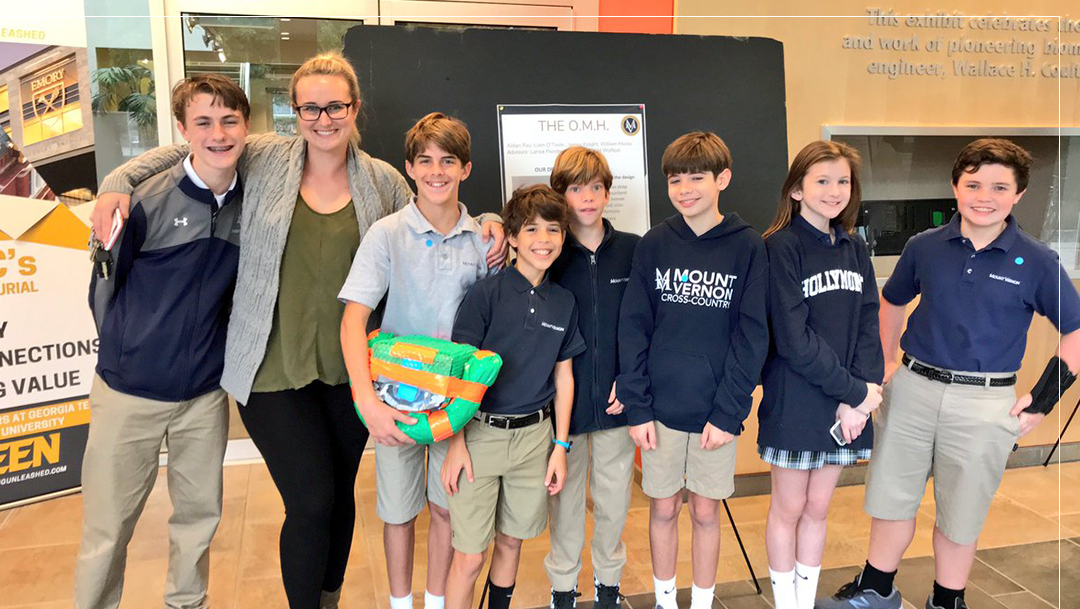
I then shared a project proposal document, which included a summary of the real world connections, the design challenge, design parameters, details of the three deliverables/checkpoints, and expectations for their final products.
This challenge boosted their confidence, ability to take calculated risks, and ability to feel empathy (and sometimes sympathy). Students were floored that they could take on such complex challenges that biomedical engineers cannot even solve. The five winnings teams that showcased their work at Georgia Tech mentioned in their reflection of this project that it was the most meaningful experience they have had at Mount Vernon to date.
MV students are capable and eager to tackle difficult, real-world challenges and I need to remember as an educator not to hold them back but guide them as they explore their own learning journey. I am a mentor, not a teacher.
We can do better.
The Take Away
Skills Learned: What did they not learn? Collaborating with others, embracing individual strengths within a team, creative solution seeking skills, communication through scientific posters, the design process is rooted in feedback, etc.
Observations Made: My team of biomedical engineers and I came to the conclusion that if we were to reiterate this unit, then we would give the students full reign of the problem they want to solve within the field of biomedical engineering.
